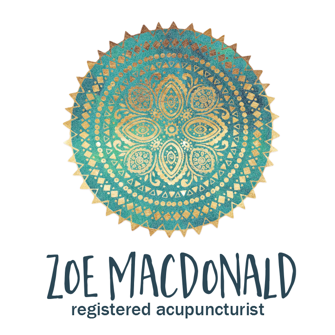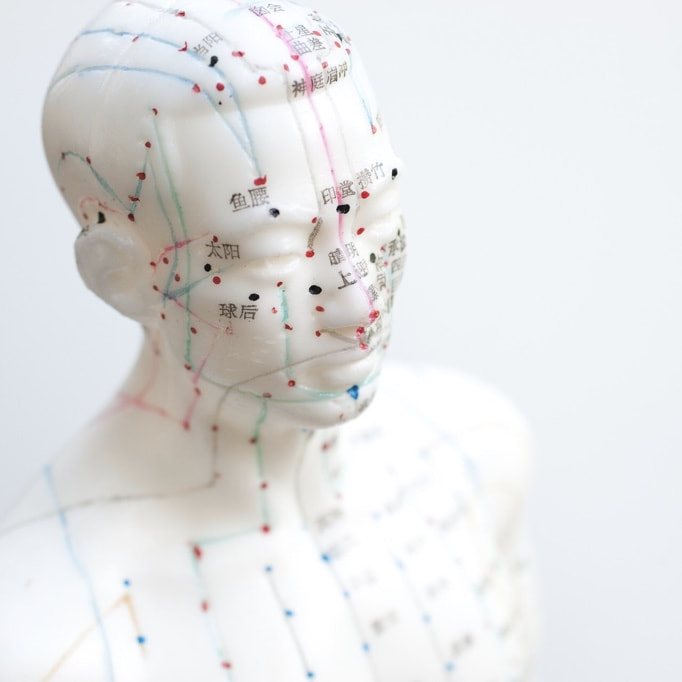Just How Does Acupuncture Work, Anyway?
Acupuncture is based on a few base concepts, the most fundamental of which is the existence of Qi.
Qi is often translated as Energy, but when talking to patients I describe it as a form of bio-electricity. This bio-electricity, or Qi, moves around our bodies in a circuit of pathways we call channels. There are 14 channels of the body, most of which correlate to specific organ networks. For example, the Heart has a channel (which runs bilaterally from each underarm, down the antero-medial aspect of your arm, passing through the wrist and out to the tip of the small finger).
When you see an acupuncturist, he or she will ask a number of questions, check your pulses and observe your tongue, and may palpate areas of your body for tenderness. In doing this he or she is trying to track down where there are blockages of Qi in your channels that are causing the complaint you’ve come in with. This circuitry of channels also explains why sometimes you will have needles inserted in areas of your body that may seem unrelated to the area where you have pain or difficulty.
What Do the Needles Do?
Acupuncture needles, made of stainless steel (and very fine), act as conduits for Qi. In thinking of Qi as bio-electricity, we can envision how something metal would attract that electricity to it; so in other words, we are straightening out areas where Qi has become blocked, and in doing this we are decreasing pain and improving the circulation of Qi and blood to various tissues and organs of the body. Nourishing the body in this way reduces symptoms and may also be used preventively to keep pain and illness from taking hold in the body.
How Does Qi Become Blocked?
Qi can become blocked in the body for a variety of reasons.
Injuries, accidents, surgeries, strong emotions and trauma, as well as lifestyle choices and external environmental factors like cold, wind and humidity can effect the way Qi circulates in the body. Acupuncturists use a number of therapies and guidance to help ensure the smooth flow of Qi in your body. This can include needles, and may also include other therapies like cupping, moxabustion, Gua Sha, acupressure, massage, and advice about diet, sleep, meditation and exercise.
Qi is often translated as Energy, but when talking to patients I describe it as a form of bio-electricity. This bio-electricity, or Qi, moves around our bodies in a circuit of pathways we call channels. There are 14 channels of the body, most of which correlate to specific organ networks. For example, the Heart has a channel (which runs bilaterally from each underarm, down the antero-medial aspect of your arm, passing through the wrist and out to the tip of the small finger).
When you see an acupuncturist, he or she will ask a number of questions, check your pulses and observe your tongue, and may palpate areas of your body for tenderness. In doing this he or she is trying to track down where there are blockages of Qi in your channels that are causing the complaint you’ve come in with. This circuitry of channels also explains why sometimes you will have needles inserted in areas of your body that may seem unrelated to the area where you have pain or difficulty.
What Do the Needles Do?
Acupuncture needles, made of stainless steel (and very fine), act as conduits for Qi. In thinking of Qi as bio-electricity, we can envision how something metal would attract that electricity to it; so in other words, we are straightening out areas where Qi has become blocked, and in doing this we are decreasing pain and improving the circulation of Qi and blood to various tissues and organs of the body. Nourishing the body in this way reduces symptoms and may also be used preventively to keep pain and illness from taking hold in the body.
How Does Qi Become Blocked?
Qi can become blocked in the body for a variety of reasons.
Injuries, accidents, surgeries, strong emotions and trauma, as well as lifestyle choices and external environmental factors like cold, wind and humidity can effect the way Qi circulates in the body. Acupuncturists use a number of therapies and guidance to help ensure the smooth flow of Qi in your body. This can include needles, and may also include other therapies like cupping, moxabustion, Gua Sha, acupressure, massage, and advice about diet, sleep, meditation and exercise.


